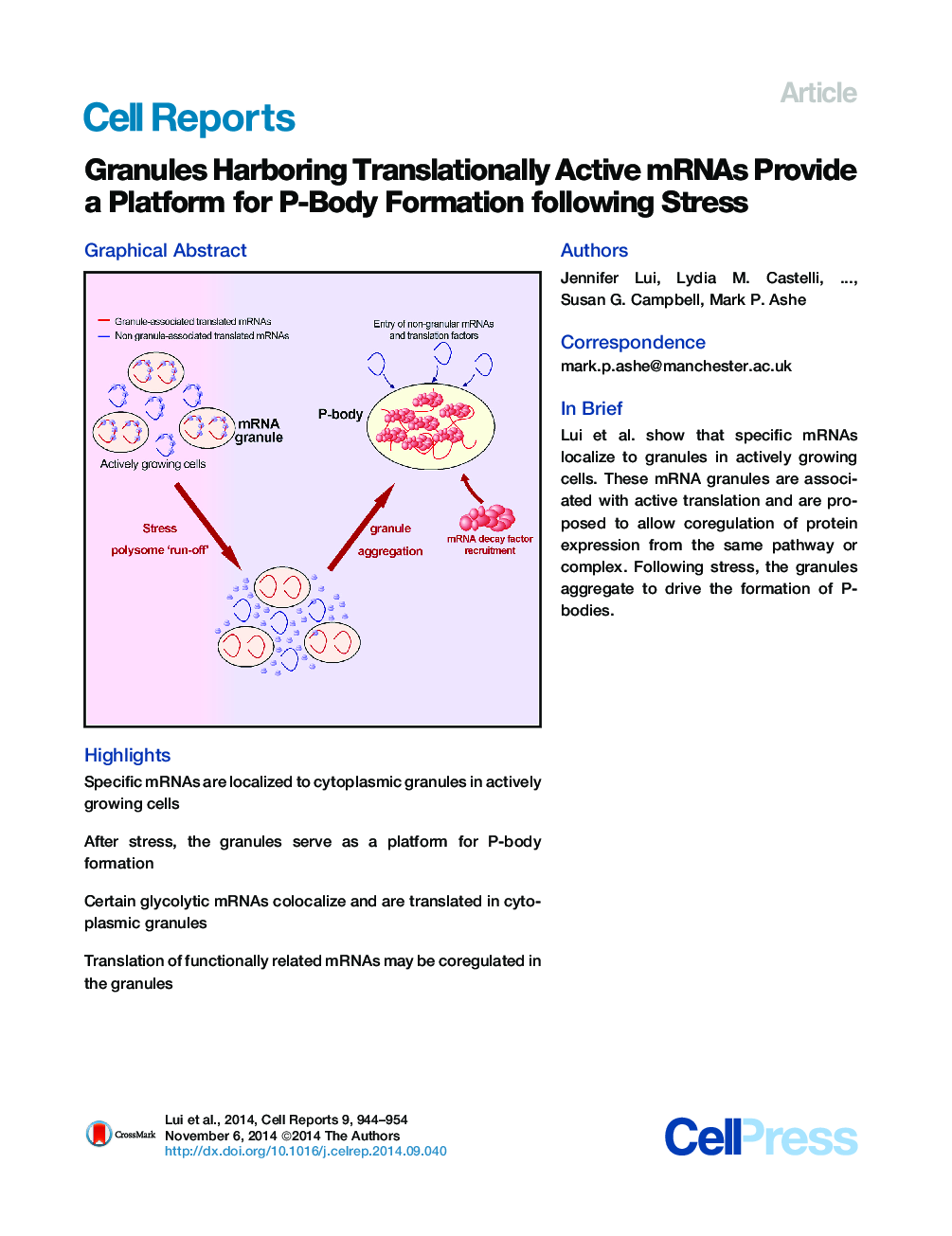| Article ID | Journal | Published Year | Pages | File Type |
|---|---|---|---|---|
| 2040051 | Cell Reports | 2014 | 11 Pages |
•Specific mRNAs are localized to cytoplasmic granules in actively growing cells•After stress, the granules serve as a platform for P-body formation•Certain glycolytic mRNAs colocalize and are translated in cytoplasmic granules•Translation of functionally related mRNAs may be coregulated in the granules
SummaryThe localization of mRNA to defined cytoplasmic sites in eukaryotic cells not only allows localized protein production but also determines the fate of mRNAs. For instance, translationally repressed mRNAs localize to P-bodies and stress granules where their decay and storage, respectively, are directed. Here, we find that several mRNAs are localized to granules in unstressed, actively growing cells. These granules play a key role in the stress-dependent formation of P-bodies. Specific glycolytic mRNAs are colocalized in multiple granules per cell, which aggregate during P-body formation. Such aggregation is still observed under conditions or in mutants where P-bodies do not form. In unstressed cells, the mRNA granules appear associated with active translation; this might enable a coregulation of protein expression from the same pathways or complexes. Parallels can be drawn between this coregulation and the advantage of operons in prokaryotic systems.
Graphical AbstractFigure optionsDownload full-size imageDownload as PowerPoint slide
